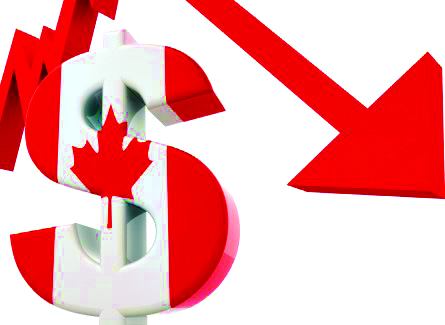Md Ashraful Kabir, Banker, Toronto
The whole world is heading for a major economic recession, not just Canada.
We have over 7.3 billion people on a planet that science tells us can feed only 7 billion maximum and our numbers keep growing. This means food prices are set to increase. Now, add to that the fact that climate change is going to lower the amount of food produced on a global scale thanks to flooding, fires, droughts, etc.
In short there will be an increase in the cost of living that is set to accelerate and Canada will not be immune.
Now think of what people do when they get hungry. They get angry. When people get angry, they tend to fight more and pick up weapons to defend their interests. The end result is not pretty.
Canada, with a small population, larger geographical area and highly educated population should fare better than most countries, but we will still be in the thick of the change.
Canada’s economy would shrink 1.8% in 2020, Scotiabank says. A new analysis of escalating trade disputes involving the United States warns that a deterioration into an all-out, global trade war would knock North America’s economies into recession. For Canada, it predicts the economy would shrink 1.8 per cent.
The current global expansion will likely continue into next year, given that the US is running large fiscal deficits, China is pursuing loose fiscal and credit policies, and Europe remains on a recovery path. But by 2020, the conditions will be ripe for a financial crisis, followed by a global recession.
There are few reasons for this. First, the fiscal-stimulus policies that are currently pushing the annual US growth rate above its 2% potential are unsustainable. By 2020, the stimulus will run out, and a modest fiscal drag will pull growth from 3% to slightly below 2%.
Second, because the stimulus was poorly timed, Canada economy is dependent on the US economy and is now overheating, and inflation is rising above target. The US Federal Reserve will thus continue to raise the federal funds rate from its current 2% to at least 3.5% by 2020, and that will likely push up short- and long-term interest rates as well as the US dollar.
Meanwhile, inflation is also increasing in other key economies, and rising oil prices are contributing additional inflationary pressures. That means the other major central banks will follow the Fed toward monetary-policy normalization, which will reduce global liquidity and put upward pressure on interest rates.
Also, the Trump administration’s trade disputes with China, Europe, Mexico, Canada and others will almost certainly escalate, leading to slower growth and higher inflation
Moreover, the leverage in many emerging markets and some advanced economies is clearly excessive. Commercial and residential real estate is far too expensive in many parts of the world. The emerging-market correction in equities, commodities, and fixed-income holdings will continue as global storm clouds gather. And as forward-looking investors start anticipating a growth slowdown in 2020, markets will reprice risky assets by 2019.
Again, once a correction occurs, the risk of illiquidity and fire sales/undershooting will become more severe. There are reduced market-making and warehousing activities by broker-dealers. Excessive high-frequency/algorithmic trading will raise the likelihood of “flash crashes.” And fixed-income instruments have become more concentrated in open-ended exchange-traded and dedicated credit funds.
Finally, once the perfect storm outlined above occurs, the policy tools for addressing it will be sorely lacking. The space for fiscal stimulus is already limited by massive public debt. The possibility for more unconventional monetary policies will be limited by bloated balance sheets and the lack of headroom to cut policy rates. And financial-sector bailouts will be intolerable in countries with resurgent populist movements and near-insolvent governments.
Unlike in 2008, when governments had the policy tools needed to prevent a free fall, the policymakers who must confront the next downturn will have their hands tied while overall debt levels are higher than during the previous crisis. When it comes, the next crisis and recession could be even more severe and prolonged than the last.
It’s no secret that many Canadians have been struggling financially as of late. With the rising cost of living in Canada and interest rates, it can be hard to make ends meet at the end of the month. Unfortunately, Canada could be heading into even harder times come 2019. What this ultimately means for Canadians is to be prepared for a possibly tough year come 2019, and save where you can in preparation. While there’s no way to give a 100% accurate prediction on the future of the country’s economy, it’s definitely better to be safe and assume the worse than – be sorry!











